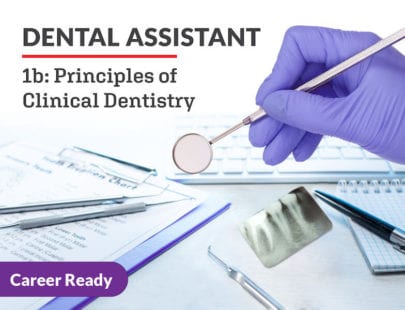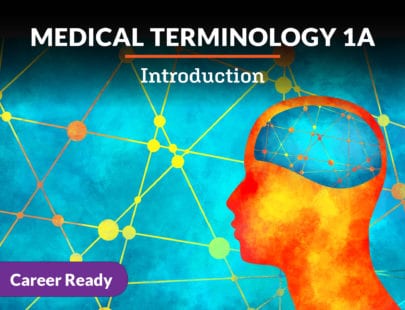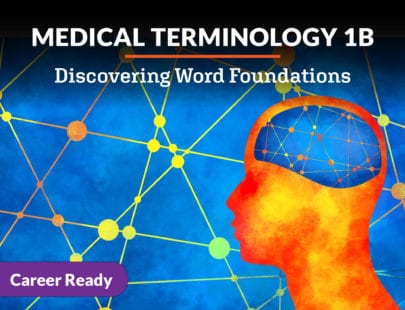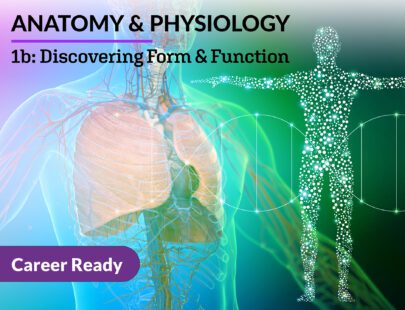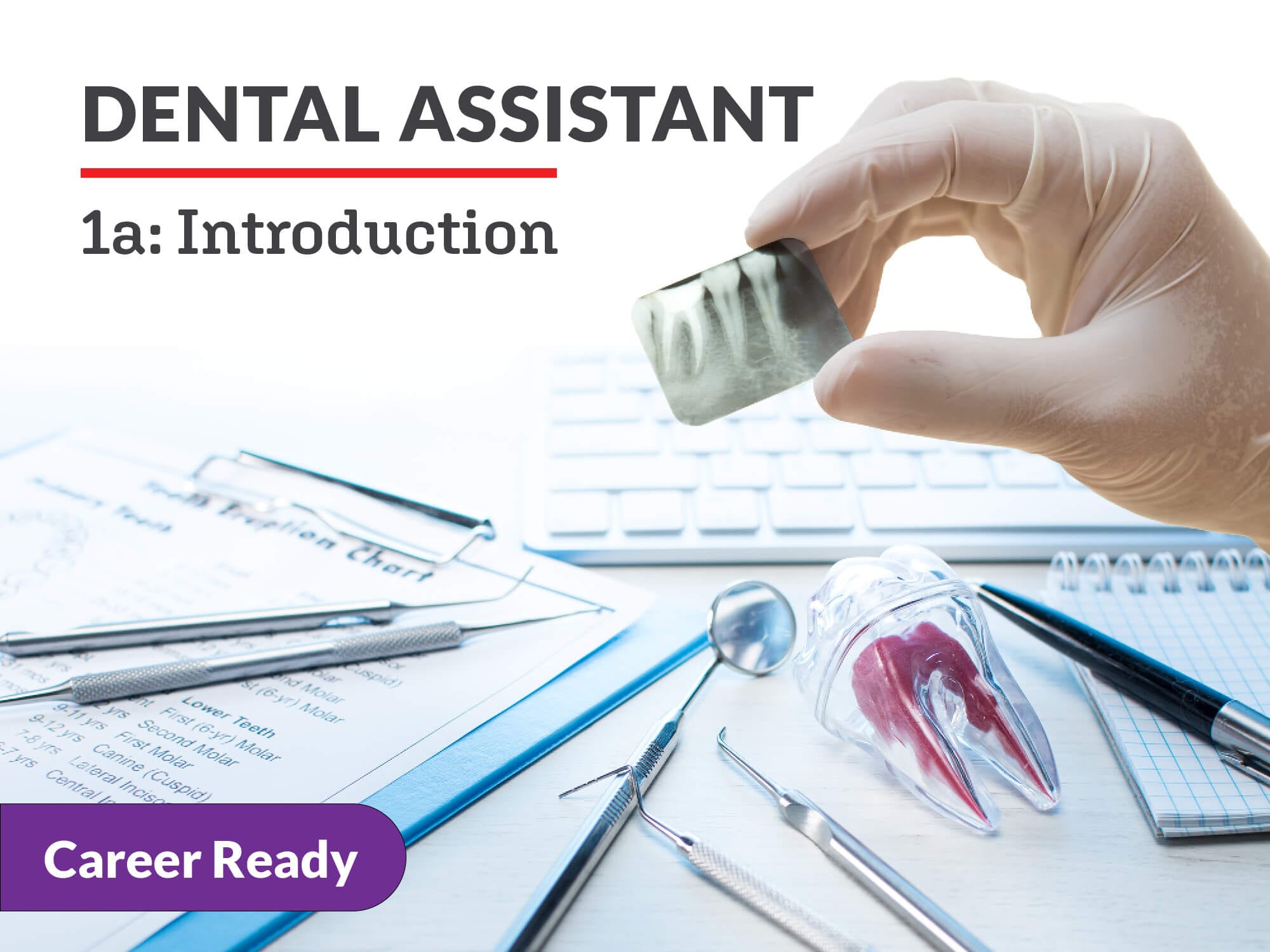
Dental Assistant 1a: Introduction
Are you a compassionate person who genuinely cares about helping others be healthy? Learn how becoming a Dental Assistant can offer you a rewarding career as well as job security. Start with learning the different roles within a dentist’s office, organizations to get involved with, and basic head, neck, and dental anatomy. Learn what it takes to embark on a career sure to provide personal and professional fulfillment.
Units at a Glance
Unit 1: Introduction to Dentistry
Oral health problems have been around as long as humans have been in existence. How they were treated, of course, is very different today. In the past, dentistry was used to treat a patient who was already experiencing pain. A dentist could not restore teeth like they do now and often left patients with only the uncomfortable option of an extraction. However, with all the contributions made over the last several hundred years, dentistry now has more options than ever before to help people take care of one of their best assets—their smile!
What will you learn in this unit?
- Compare early contributions in dentistry from ancient civilizations such as Egypt, Greece, China, and Rome
- Review important contributions from the Renaissance period and early America
- Examine key people in and important components of the development of dental schools
- Identify key women, African Americans, and American Indians in dental history
- Discover those who contributed to the profession of dental assisting and dental hygiene
Unit 2: The Dental Team and Professional Organizations
The world of dentistry expands far beyond the role of the dentist. There are many members of a team that make an individual office run smoothly. And each position has its own set of educational requirements and professional organizations to support their career. Dentistry is a challenging and exciting opportunity that can offer tremendous job satisfaction, but it also requires dedication, personal responsibility, and commitment to continuing your education. It’s time to learn more about the various team members who play essential roles in the day to day operations of a dental practice. More importantly, we’ll dive deeper into examining the job of a dental assistant. By the time you’re done here, you’ll have a greater appreciation for just what this career entails and how very vital it is to the success of the dental practice as a whole.
What will you learn in this unit?
- Name the dental health team members including the dentist, dental hygienist, dental assistant, administrative assistant, and laboratory technician
- Explain the roles and responsibilities of each dental team member
- Identify characteristics of a professional dental assistant including professional work habits, respect for patients and team members, attendance, communication, teamwork, and problem-solving
- Describe the role of a professional dental organization
Unit 3: Investigating Dental Ethics and Law
What should I do? What am I required to do? What’s in the patient’s best interests? Being a dental professional means that patient care is one of your top priorities and therefore, these three questions should always be at the forefront of your mind. Sometimes it is a simple matter of complying with legal standards that must be followed. Other times, however, it’s a more complicated ethical matter of deciding what is the morally right course of action. Whether you are talking about ethics or laws, both are important aspects of dentistry and a solid understanding of them is essential to success in the field. Let’s learn more about how these two important concepts guide and shape the day-to-day work of the dental assistant.
What will you learn in this unit?
- Describe legal and ethical considerations that apply to the dental professional
- Define commonly used legal terms relating to dentistry
- Explain the State Dental Practice Act and its purpose and the role of the Board of Dentistry
- Understand the difference between general and direct supervision and the consequences of practicing dentistry without a license
- Identify standards of the Health Insurance Portability and Accountability Act (HIPAA) and the need to protect patient privacy
Unit 4: Basic Health and Anatomy
Every patient has their own unique medical and dental history. The dental assistant plays a key role in collecting all the necessary information about the patient’s basic health. This assessment is vital to helping the dentist provide the highest level of care. However, for the dental assistant to perform this piece of their job in the most efficient and accurate manner, they must have an understanding of basic anatomy that will assist them with taking vital signs. This link between patient and dentist is just one of many essential responsibilities that rest in the hands of the dental assistant.
What will you learn in this unit?
- Demonstrate how to take a proper medical-dental health history
- Describe the body systems of general human anatomy
- Explain factors that may affect temperature, pulse, respiration, and blood pressure
- Identify anatomical locations used to measure temperature, pulse, respiration, and blood pressure
Unit 5: Anatomy of the Head and Neck
A solid understanding of the anatomy of the head and neck is one of the first building blocks to working as a successful clinical dental assistant. Knowing the names and locations of muscles, bones, and nerves will help you be aware of any abnormalities a patient may have when assisting with a dental examination. In fact, did you know these abnormalities can affect a patient’s eating, drinking, or ability to communicate, and your ability to recognize them may impact your treatment plan and protocols for patient management? Ultimately, knowledge of this anatomy will also allow you to better advise your patients as how to best maintain their oral health and keep their smile shining bright!
What will you learn in this unit?
- Locate the bones of the cranium and face
- Identify and explain the structures and functions of the oral cavity
- Describe the structure and functions of the temporomandibular joint
- Explain the structure and development of the face
Unit 6: Basic Dental Anatomy I
As a dental assistant, an understanding of basic dental anatomy is one of the primary building blocks upon which your career is built. Without this knowledge, you cannot understand what contributes to developmental disturbances and diseases of the mouth and teeth. Learning about embryology will help you understand how teeth develop, while the study of histology will teach you how diseases occur and progress in the mouth. When you fully understand tooth names, locations, and eruption patterns, you will be better able to accurately chart treatment for your patients. A solid foundation in dental anatomy will set you up to be a strong and sought-after member of the dental health professional team.
What will you learn in this unit?
- Explain oral embryology and histology
- Name and identify the location of teeth and their surfaces
- Identify the four types of teeth found in a human dentition
- Describe the features of the four types of teeth
Unit 7: Basic Dental Anatomy II
Did you know that every tooth in your mouth is assigned a number based on its location? Have you ever examined the teeth in your mouth close enough to discover that each tooth looks different from the others? Understanding each tooth’s placement, as well as its typical appearance is necessary in order to effectively communicate with team members and identify abnormalities in a dentition and other oral pathology. And, with experience and close attention to detail, you may become quite adept at identifying conditions that warrant further investigation and, in doing so, provide better care and outcomes for your patients.
What will you learn in this unit?
- Identify the location of each primary and permanent tooth
- Explain the specialized function and classification of the four types of teeth
- Describe the three systems used for identifying and numbering teeth
- Discuss diseases of the oral cavity and conditions associated with the tongue
Unit 8: Patient Care
The heart of any healthcare professional’s job is patient care. And for the dental assistant, there are many aspects to consider, including sensitivity towards special needs patients, understanding differences in cultural expectations, and communicating effectively with others. Though this might sound like a tall order, the more diligent a dental assistant is when learning about these topics, the more beneficial they become to the office. In fact, patient care is just as important to the patient’s overall perception of the office as the treatment they receive, and in many cases, it has the greatest impact upon their satisfaction as a whole.
What will you learn in this unit?
- Describe how to effectively communicate with patients on the telephone and in-person
- Discuss the importance of understanding cultural diversity in the dental office
- Identify patients with special needs and learn typical accommodations and considerations for them in the dental office
- Determine the physical needs of the fearful patient to alleviate anxiety
Required Materials
Physical
- Camera phone or video camera
- Paper
- Pencil
- Friend or family member
- Colored pencils
Software
- Word processing software
- Slide presentation software
Optional
- Scanner
